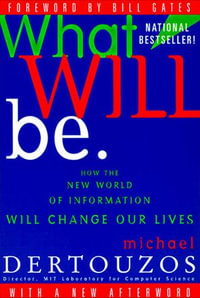
eTEXT
At a Glance
eText
$239.00
or
Instant online reading in your Booktopia eTextbook Library *
Read online on
Desktop
Tablet
Mobile
Not downloadable to your eReader or an app
Why choose an eTextbook?
Instant Access *
Purchase and read your book immediately
Read Aloud
Listen and follow along as Bookshelf reads to you
Study Tools
Built-in study tools like highlights and more
* eTextbooks are not downloadable to your eReader or an app and can be accessed via web browsers only. You must be connected to the internet and have no technical issues with your device or browser that could prevent the eTextbook from operating.
ISBN: 9783319049120
ISBN-10: 3319049127
Series: Lecture Notes in Computational Science and Engineering : Book 96
Published: 28th April 2014
Format: ePUB
Language: English
Publisher: Springer Nature
Volume Number: 96
You Can Find This eBook In
Non-FictionComputing & I.T.Computer ScienceScienceScience in GeneralMaths for ScientistsPhysicsQuantum Physics & Quantum Mechanics & Quantum Field TheoryEngineering & TechnologyElectronics & Communications EngineeringElectronics EngineeringElectronic Devices & Materials
Semi-Conductors & Super-ConductorsStatistical PhysicsMathematicsApplied MathematicsCalculus & Mathematical AnalysisNumerical AnalysisReference, Information & Interdisciplinary SubjectsResearch & InformationInformation theoryCybernetics & Systems TheoryMaterials & States of MatterMechanical Engineering & MaterialsMaterials Science
This product is categorised by
- Non-FictionComputing & I.T.Computer Science
- Non-FictionScienceScience in GeneralMaths for Scientists
- Non-FictionSciencePhysicsQuantum Physics & Quantum Mechanics & Quantum Field Theory
- Non-FictionEngineering & TechnologyElectronics & Communications EngineeringElectronics EngineeringElectronic Devices & MaterialsSemi-Conductors & Super-Conductors
- Non-FictionSciencePhysicsStatistical Physics
- Non-FictionMathematicsApplied Mathematics
- Non-FictionMathematicsCalculus & Mathematical AnalysisNumerical Analysis
- Non-FictionReference, Information & Interdisciplinary SubjectsResearch & InformationInformation theoryCybernetics & Systems Theory
- Non-FictionSciencePhysicsMaterials & States of Matter
- Non-FictionEngineering & TechnologyMechanical Engineering & MaterialsMaterials Science























